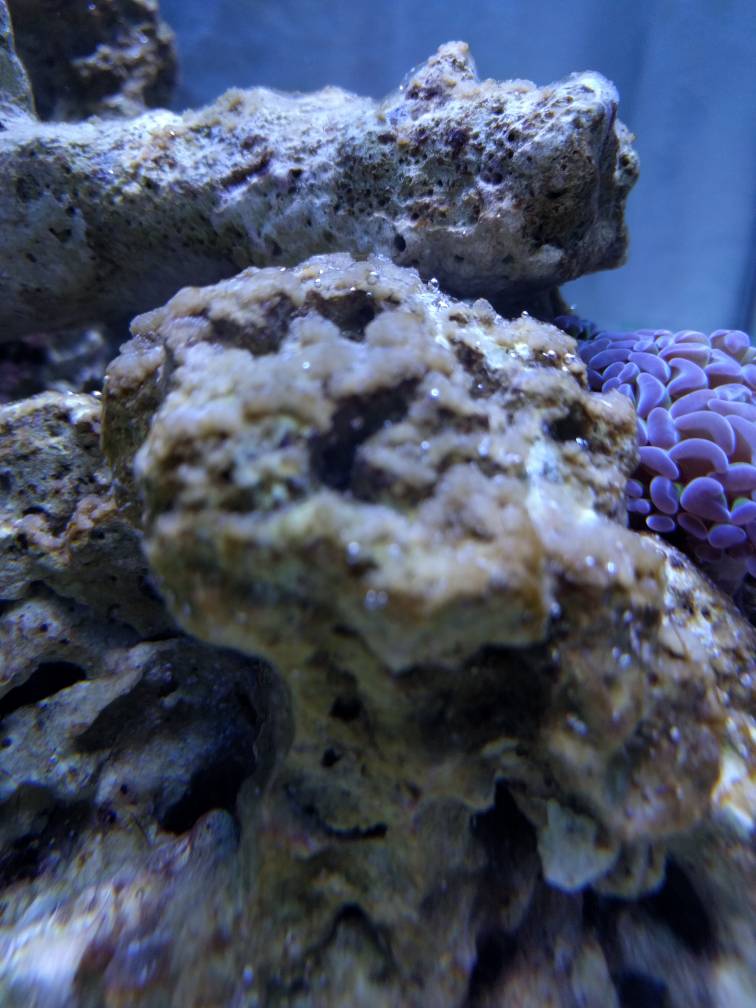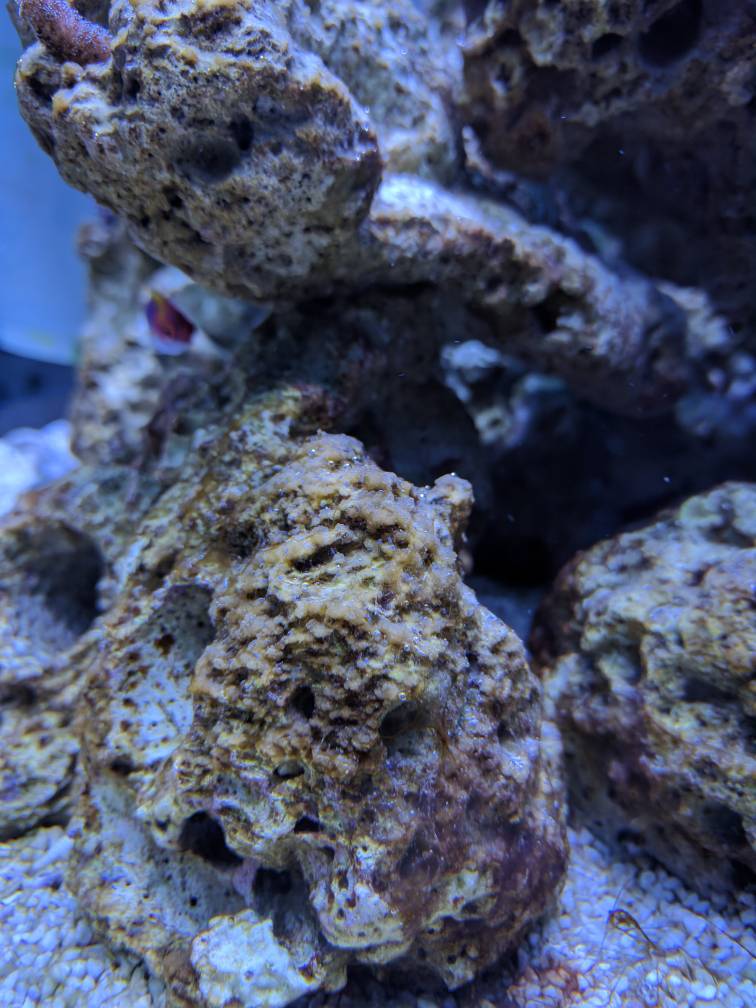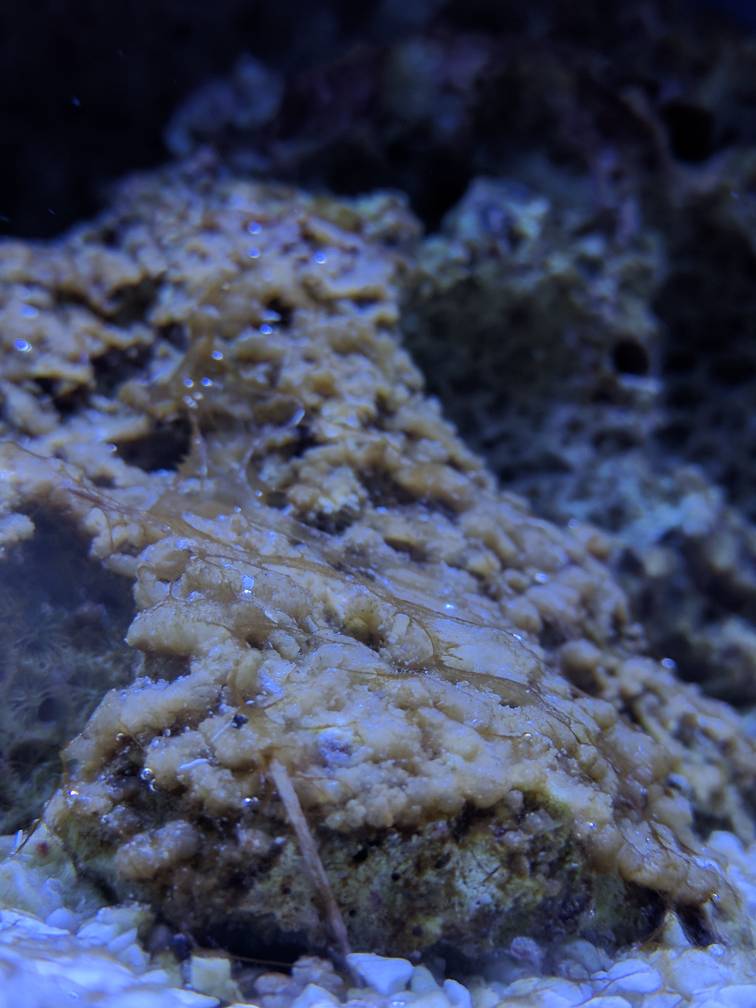I can not figure out what this stuff is. It doesn't go away at night. It's spreading but not quickly. It doesn't get "worse" in the day. I don't think any of my snails (Astraea, Cerith, Trochus) touch it. It does form some air bubbles but not a lot. If you look close it looks like pods are moving all over in it. One of the pictures even shows the pods.
Any ideas?



Any ideas?




















